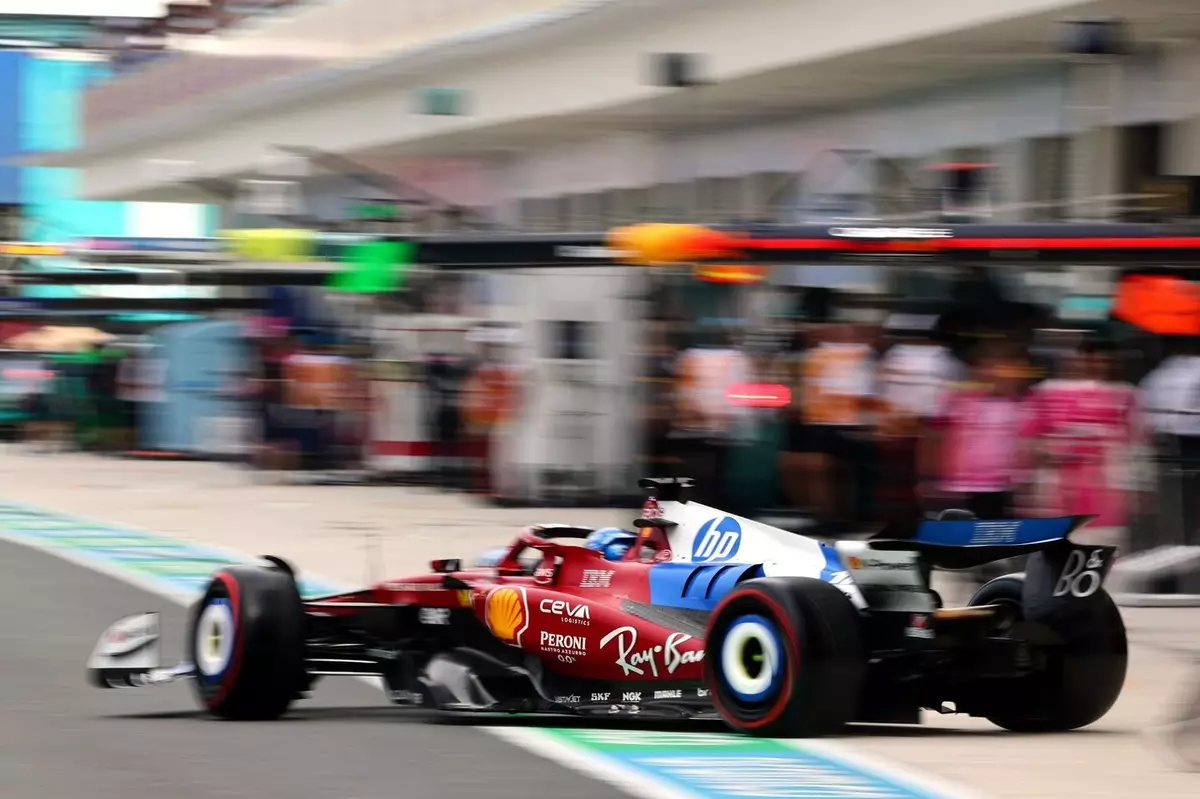In the dynamic realm of Formula 1, where speed and precision are paramount, the Ferrari team, spearheaded by Charles Leclerc, finds itself embroiled in a frustrating conundrum. Despite assurances from Leclerc that Ferrari is extracting every ounce of performance from its 2025 car, the stark reality remains that their efforts resulted in a disheartening eighth-place qualifying position at the Miami Grand Prix. This situation becomes even more troubling when considering Leclerc’s belief that he achieved a commendable lap time, yet it ultimately left him languishing over half a second behind the pace of his competitors, most notably Max Verstappen, who secured pole position.
The irony is palpable: Leclerc was not alone in experiencing a lackluster qualifying performance. His teammate, Lewis Hamilton, found himself narrowly missing out on Q3, ultimately relegated to the 12th spot. This underperformance raises significant questions about the inherent capabilities of the car and exposes an unsettling truth—while the drivers may not be the problem, the machine beneath them certainly seems to be.
The Impact of Circuit Characteristics
The Miami International Autodrome, with its unique combination of straightaways and, more critically, slower corners, served as a litmus test for Ferrari’s current design limitations. Tracks with high-speed straights often allow teams with downforce deficiencies to mask their shortcomings; however, in circuits filled with tight turns, like Miami, those deficiencies become glaringly apparent. Leclerc noted that the track’s layout exposed the weaknesses of the Ferrari car, particularly when drivers from Williams were ahead of him, an unsettling reality for a team historically recognized for its engineering prowess and competitive spirit.
The correlation between track characteristics and car performance is undeniable; as teams continue to innovate their strategies, the very fabric of the racing experience shifts. A car that excels in speed may falter in corners, and vice versa. For Ferrari, this balance remains an elusive target. Leclerc’s insight underscores a recognized truth in F1: increasing speed doesn’t solely hinge on the power unit but rather the entire aerodynamic setup and how it interacts with a circuit’s design.
The Pitfalls of Strategic Decisions
Adding to the complexity of the weekend were further complications stemming from a pre-race incident involving Leclerc. His unfortunate aquaplaning into the wall during the formation laps showcased a critical tactical misjudgment by the team. The choice to send Leclerc out on intermediate tires amidst standing water not only compromised his chances in the sprint race but also forced a hasty recalibration of the team’s race strategy moving forward. Such miscalculations can have serious repercussions, not merely affecting a single event but resonating throughout the newfound momentum and dynamics of the team.
Leclerc’s admission regarding the need for introspection within the team speaks volumes. It reveals an acute awareness that while individual errors can be moot, strategic blunders can derail an entire campaign. The ability to respond to changing conditions and make informed, swift decisions is the hallmark of a leading team in Formula 1.
Analyzing Driver Performance Under Pressure
The psychological burden on a driver like Leclerc is profound. While he is undoubtedly talented, the increasing frustration of subpar performance can easily seep into their driving style, leading to hesitancy and errors—a cycle that can undermine any positive momentum. His assertion that he was satisfied with his personal performance during qualifying poses a difficult question: how does one maintain confidence when the results do not reflect the effort?
This psychological battle becomes critical as Leclerc and Ferrari prepare for the challenges ahead, particularly as the season unfolds and the competition continues to strengthen. The key lies in resilience and adaptability—qualities that have defined not just Leclerc’s character, but also the very essence of competitive racing. The prospects for improvement hinge not solely on engineering prowess but a cultural shift within the team, embracing both victories and setbacks as integral to their evolution.
Ferrari stands at a crossroads. With capable talent in the cockpit, the next steps lie in adapting their strategies, enhancing their performance, and confronting the challenges of an increasingly competitive field. The pressures of the season may weigh heavily, but success in Formula 1 demands not just speed, but also an unwavering spirit to innovate and overcome.

